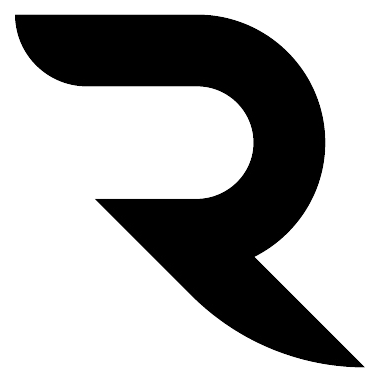Which primate has a 2.1 3.3 dental formula?
tarsiers
The tarsier dental formula, 2.1. 3.3/1.1. 3.3, is unique among primates, but tarsier teeth resemble those of anthropoids in overall proportions, with large upper central incisors, small lower incisors, and large canines. The postcranial skeleton of tarsiers is striking in many of its proportions.
Do humans have a 2.1 2.3 dental formula?
The average mammal has a dental formula of 3.1. 4.3, meaning one side of the mandible has 3 incisors, 1 canine, 4 premolars, and 3 molars. Because primates have more flexible diets and shorter faces, they have fewer and more generalized teeth. Catarrhines, apes, and humans all have a dental formula of 2.1.2.3.
What is a 2.1 2.3 dental formula?
So for example, the formula 2.1.2.3 for upper teeth indicates 2 incisors, 1 canine, 2 premolars, and 3 molars on one side of the upper mouth. The deciduous dental formula is notated in lowercase lettering preceded by the letter d: for example: di:dc:dp.
What is the dental formula of New World monkeys?
New World Monkeys all have a 2-1-3-3 dental formula.
What is the dental formula of the baboon?
Just like humans and other Old World monkeys and apes, baboons have 32 teeth. The usual dental formula of a baboon’s teeth or jaw structure is as follows: Incisors 2/2; Canines 1/1; Premolars 2/2; Molars 3/3 = 32.
Do apes have Y 5 molars?
In addition, the lower molar teeth of apes and humans have five cusps, or raised points, on their grinding surfaces. This is known as a Y-5 pattern because the area between the cusps roughly is in the shape of the letter Y. Monkeys only have four cusps on their lower molars.
Do humans have Y-5 molars?
Which superfamily belongs in Infraorder Platyrrhini?
| SUBORDER | INFRAORDER | SUPERFAMILY |
|---|---|---|
| Anthropoidea (anthropoids) | Platyrrhini (New World monkeys) | Ceboidea |
| Catarrhini (Old World monkeys, apes and humans) | Cercopithecoidea (Old World monkeys) | |
| Hominoidea (apes and humans) |
What does a dental formula of 2.1 2 indicate?
The premolars (or bicuspids) and molars, with their multiple cusps, are used to grind and smash food. In platyrrhine species, there are 3 premolars and 2 or 3 molars. This results in a dental formula of 2.1. 3.2 or 2.1.
What is the dental formula for the howler monkey?
Like other members of the family, howler monkeys have 36 teeth, following the dental formula of I 2/2, C 1/1, P 3/3, M 3/3 (Strier 2004).
Do orangutans have y5 molar?
In addition, the lower molar teeth of apes and humans have five cusps, or raised points, on their grinding surfaces. This is known as a Y-5 pattern because the area between the cusps roughly is in the shape of the letter Y.
What is the difference between Bilophodont molars and Y 5 molars?
A Y-5 molar pattern is when the tooth is separated in to an amount of different pieces that make up the complete tooth. Bilophodont molar pattern is when the molar is in distinct 2 sections.
What is sectorial premolar?
Sectorial Premolar. premolars in the C/P3 system that hone and sharpen the canines. Diastema. gaps between teeth to receive the projecting canine of the opposite jaw, especially in those animals with very large canines such as baboons and gorillas.
What is the smallest Platyrrhini?
New World monkeys (infraorder Platyrrhini) are arboreal and relatively small-bodied, ranging in size from approximately 100g (the pygmy marmoset [Cebuella pygmaea]) up to 10kg (the muriqui [Brachyteles arachnoides] and spider monkey [Genus Ateles]).
How do Colobines and Cercopithecines differ?
The Differences between Cercopithecines and Colobines Colobines have a deeper jaw which extends father below the joint. Colobines’ molars have high sharp cusps, while cercopithecines’ have lower, more rounded cusps. Colobines have a complex stomach, which is atypical for primates.
Do hominoids have Y 5 molars?
Within this grouping, the two families Hylobatidae and Hominidae can be distinguished from Old World monkeys by the number of cusps on their molars; hominoids have five in the “Y-5” molar pattern, whereas Old World monkeys have only four in a bilophodont pattern.
What is the dental formula for a concave palate?
The palate is long and concave, extending beyond last molar. The bullae are small but a bony eustachian tube is present (formed from the ectotympanic). The dental formula is 2/2, 1/1, 2/2, 3/3 = 32.
What are the characteristics of Cercopithecoids?
Although cercopithecoids are highly variable in habitat use, social behavior, and diet, a signature dental feature unites all of its extant members: bilophodonty (bi: two, loph: crest, dont: tooth), or the presence of two cross-lophs on the molars.
Why did Cercopithecoids evolve bilophodonty?
Bilophodonty, the dental trait that unites all living cercopithecoids, evolved later, likely in response to the inclusion of leaves in the diet. Old World monkeys (Cercopithecoidea) are a highly successful primate radiation, with more than 130 living species and the broadest geographic range of any extant group except humans.
What is the dental formula for the incisors?
The dental formula is 2/2, 1/1, 2/2, 3/3 = 32. The medial incisors are often broad and spoon-shaped; the upper canines are usually large and separated from incisors by a small diastema; the first lower premolar is enlarged and its edge shears against the sharp posterior edge of upper canine; the molars quadrate and bilophodont.
